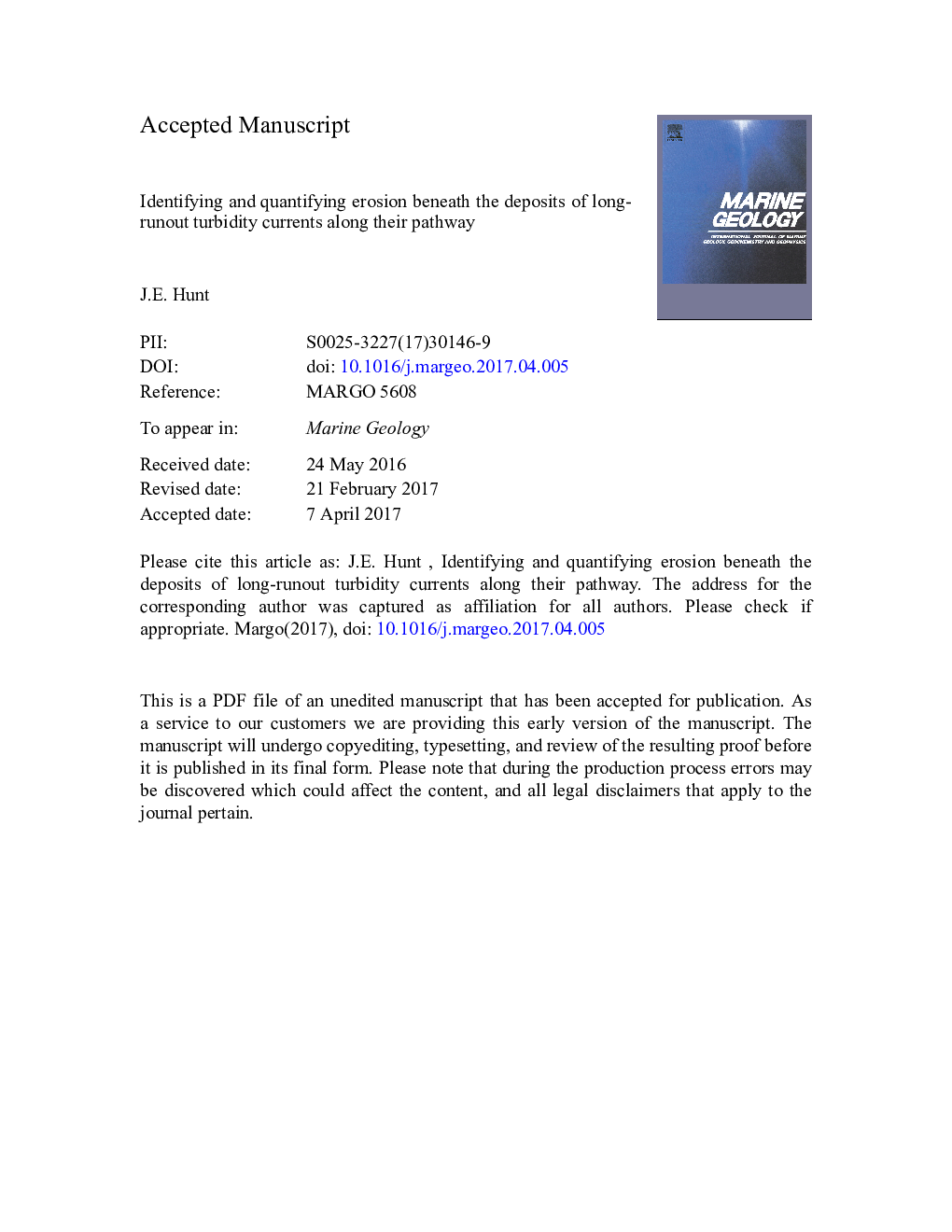| کد مقاله | کد نشریه | سال انتشار | مقاله انگلیسی | نسخه تمام متن |
|---|---|---|---|---|
| 5784466 | 1639063 | 2017 | 58 صفحه PDF | دانلود رایگان |
عنوان انگلیسی مقاله ISI
Identifying and quantifying erosion beneath the deposits of long-runout turbidity currents along their pathway
ترجمه فارسی عنوان
شناسایی و اندازه گیری فرسایش در زیر رسوبات جریان کثیف طولانی مدت در امتداد مسیر آنها
دانلود مقاله + سفارش ترجمه
دانلود مقاله ISI انگلیسی
رایگان برای ایرانیان
کلمات کلیدی
توربیدیت، فرسایش، ایترکس، بیواستراتیگرافی کوکولیت،
موضوعات مرتبط
مهندسی و علوم پایه
علوم زمین و سیارات
ژئوشیمی و پترولوژی
چکیده انگلیسی
Variations between the geochemical compositions, coccolith species compositions and the physical properties of turbidite muds and their underlying hemipelagites can be used to understand the erosive nature of sediment gravity flows. Large-volume submarine landslides on the NW Moroccan continental margin produce long-runout turbidity currents capable of traversing hundreds-to-thousands of kilometres across the adjacent Moroccan Turbidite System (MTS). These turbidity currents are responsible for turbidites that are among the largest-volume, most aerially extensive, and longest-runout deposits recorded. These resulting turbidite beds can be correlated over distances of >Â 1800Â km across the full 250,000Â km2 area of the MTS. Due to the ability to trace these individual flow deposits throughout the MTS large-volume beds A5, A7, A11, A12 and A15 can be shown to be erosive upon debouching Agadir Canyon, whilst smaller-volume flows were not erosive. These aforementioned large-volume flows have been capable of eroding up to 15Â km3 of material in the Canyon mouth, equating to as much as 50% of the later deposit volume. Evidence suggests individual flows erode up to 4.5Â m of sediment within scours in the mouth of Agadir Canyon. However, these scours are >Â 8.0Â m deep, indicating that several flows contribute to forming the scours in a series of cut and fill episodes. Several flows, including beds A5, A7, A11 and A12 were also erosive in Agadir Basin up to 210Â km from the canyon. The present study indicates that large-volume flows A5, A7 and A12 are also erosive within the channel-lobe transition zone within the proximal Madeira Abyssal Plain after exiting the Madeira Channels, over 800Â km from Agadir Canyon. Studying the deposits of these flows and their compositional changes along their entire pathway has provided invaluable information of whether the flows are erosive, where this erosion takes place, and to what extent they erode the seafloor. There are also broader implications towards gaining information about flow processes at the bed interface, calculating basin sediment budgets and better understanding discontinuous stratigraphy in distal turbidite systems.
ناشر
Database: Elsevier - ScienceDirect (ساینس دایرکت)
Journal: Marine Geology - Volume 389, 1 July 2017, Pages 32-51
Journal: Marine Geology - Volume 389, 1 July 2017, Pages 32-51
نویسندگان
J.E. Hunt,
